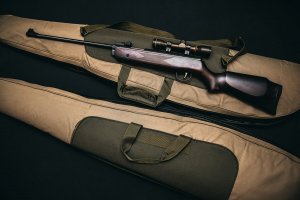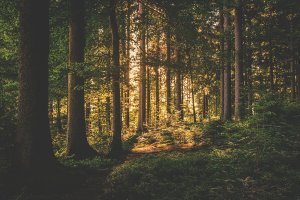As the warm breeze turns spring into summer, it’s important to begin thinking about the fall deer season. While the deer are relatively calm, with plentiful food around, the deer are growing into the game you will be hunting soon enough. If you are serious about your hunting and finding that perfect bucks, there are things you can and should do to prepare yourself for the deer season.
Here are a number of things you can and should be doing to prepare to bag that big deer.
Summer Preparations Yield Fall Results!
- Gear Inspections
Often, most of your deer hunting gear stays in storage most of the year, only to get it out and check a few weeks before the hunt. Often there are things to clean prepare and replace before each season. Waiting till the last minute often sends you into a pinch for time, and ultimately neglect.

Many hunters completely forget about checking their gear until the hunting season rolls around, and that can spell trouble. You’re going to spend precious time and money at the sporting goods store replenishing supplies during the season if you neglect your field equipment in the summer. The summer months are the perfect time to address any issues, and chances are you’ll find there’s plenty of work to be done.
There is something painful about walking into the woods only to find your gear broken, missing, or torn apart by mice. In addition to any safety equipment like a harness for your tree stand, it’s important to check your electronics for batteries, and that your knives are clean and sharp for that exciting moment when you get your deer. It’s never a good experience to make your kill, and find out your knife is completely dull.
Prepare for Fall, Today!
- Talk to Locals
Farmers also often get bombarded with requests to hunt their land in the fall. If you work to establish a relationship early in the year, you can often get yourself first in the pecking order for hunting possibilities before the rest of the crowd.
If there are farms in your area, the farmers typically have a good handle on what’s going on with local deer populations. Since they are constantly out in the field working the land, they are often intimately familiar with the local conditions.
Bear in mind however, this doesn’t always mean they will share, as many farmers are often big hunters themselves. Often these properties are big enough to share, and many hunters end up leasing or allowing portions to be used by others.
- Trail Cameras
When it comes to deer management and population tracking, track cameras can be extremely useful. Summer is a great time to set up and monitor those, as the weather is often perfect for strolls through the field and woods. It’s often relaxing and can lead to a better idea of where the deer are, and what monster bucks may be wandering the property.
Many deer hunters find this information very useful when deciding which deer to harvest in season. This can help the hunter remain patient, and be a bit more choosy, having a familiar knowledge of the surrounding deer and which he may want, and not want, to shoot.
The Fall Hunt Begins Now
- Access Paths and Woods Entry
As you enter your property to hunt in the fall, you want to make sure have no obstacles or reasons to scare any deer away from your chosen location. Clear paths of heavy brush, logs, and make sure you have multiple paths of entry to your spot, for varying wind conditions.

- Sighting in your Rifle or Bow
As deer season begins, hunting ranges really start to fill up. If you sight in your bow or rifle now, you can skip that line and still have a precise, accurate shot. This is important both for clean kills, but as well as accuracy and safety hitting your target. Building familiarity with your weapon of choice never hurts.
If you have a new bow or rifle, this is especially important.
- Get in Shape
While most hunting practice is not overly physical, there are elements that are important. Walking to and from your spot, dragging a buck through the woods, and if you are a bowhunter, drawing your bow and holding it if needed can be arduous. Preparing for this a week before the season is too late.
- Food Plots
 Many hunters utilize food plots to help guide and keep the deer in the area they are planning to hunt. This can be a lot or a little work, but you typically get what you put in. Planting, plowing mowing, and pest prevention is all part of this sometimes tedious preparation.
Many hunters utilize food plots to help guide and keep the deer in the area they are planning to hunt. This can be a lot or a little work, but you typically get what you put in. Planting, plowing mowing, and pest prevention is all part of this sometimes tedious preparation.
Monitoring your food plots can often give you an idea of the deer movement and activity in the area, as well as supplying the necessary nutrition for large antler growth.
Preparing now is the key, waiting until that cool wind starts to blow may hinder your chance at an unforgettable experience. Procrastination is never the answer, so use your spare time this summer to prepare for when deer season rolls around.
